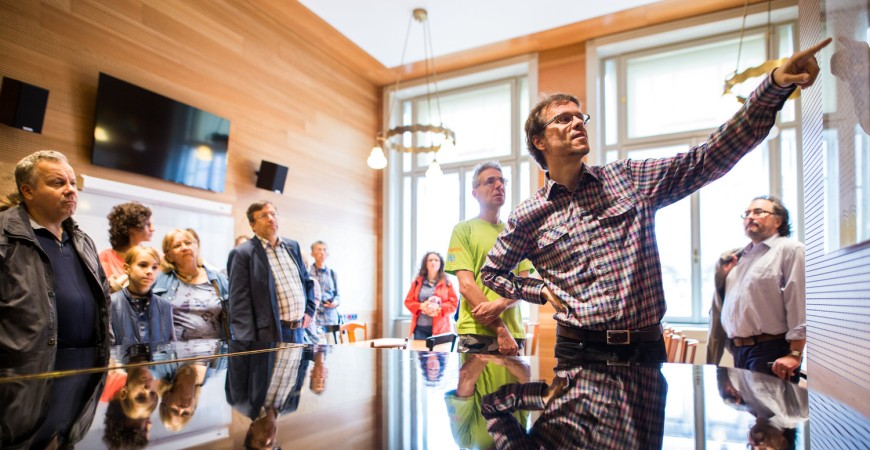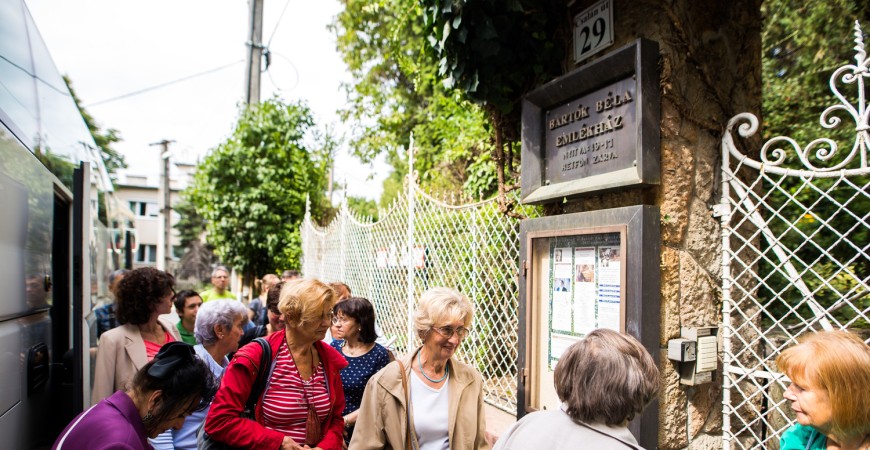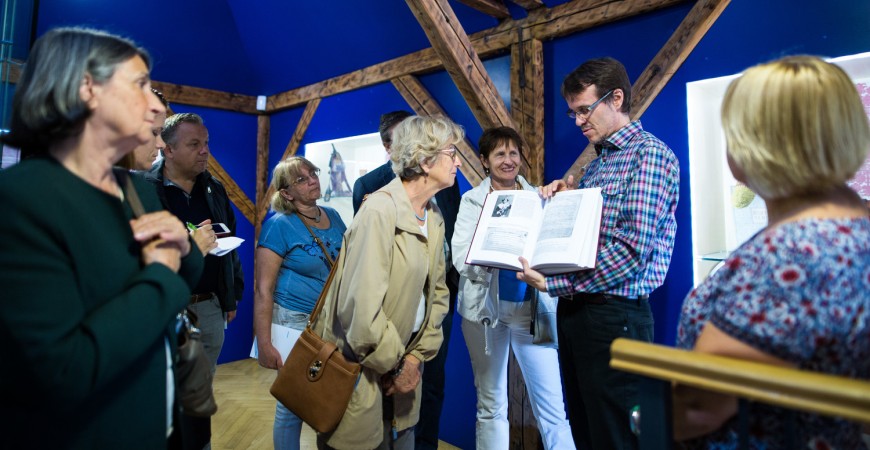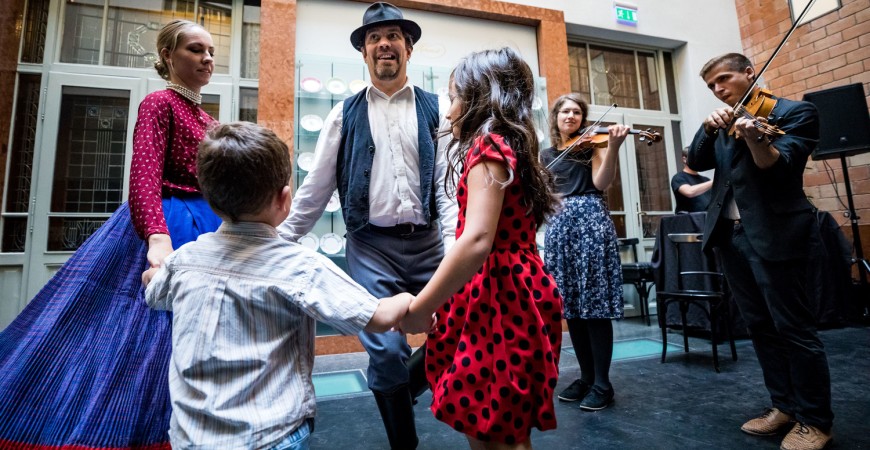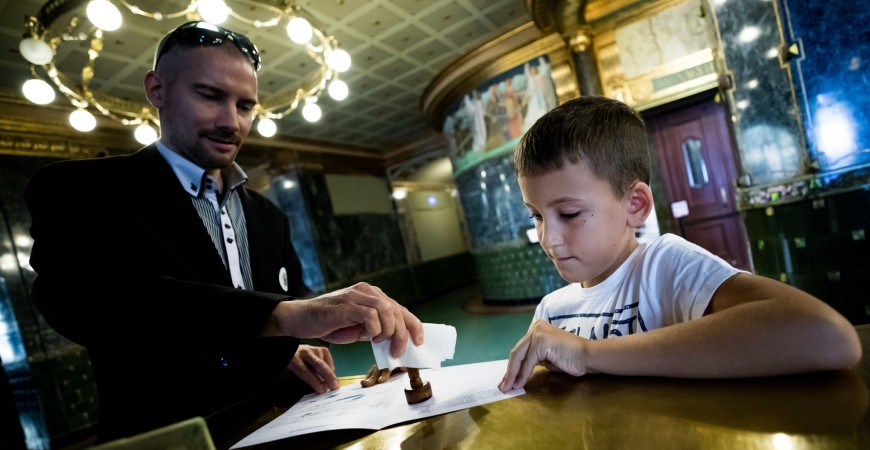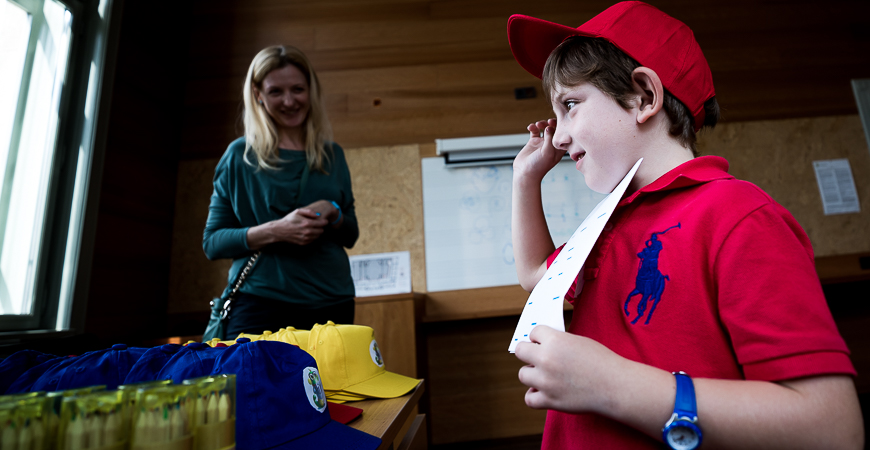The Bartók World Competition and Festival kicked off with unique programmes
On 9 September 2017, 44 contestants arrived in Budapest for the Bartók World Competition and Festival. In accordance with the official drawing lots, the Preliminary round started with Competitor No. 47, Japanese Tategami Mai. Already on the opening day of the event series organised by the Liszt Academy, a wide range of extraordinary musical and historical treats awaited the audience.
As the President of the Liszt Academy, Dr Andrea Vigh highlighted in her welcome address „Bartók’s roots are at the Liszt Academy since this institution was his alma mater. This Festival is therefore closely connected to Bartók’s many faces: the composer, the folk music researcher and the pianist. Besides the competition, we are awaiting the public with other supplementary programmes, which will make the event series even more colourful.” She added that „The jury of the competition consists of world-renowned artists, which is a great honour to us” and then the President officially opened the World Competition. The head of the jury, Salvatore Accardo was talking about his expectations: „it will be a wonderful experience to spend the following 10 days with these jurors.” He also stressed the significance of the Bartók’s works composed for the violin and emphasised the importance of Budapest on the world map of violinists.

Photo: Gábor Ancsin / Liszt Academy
Before the drawing lots for the order of the Preliminary round, two students of the School for Special Young Talents of the Liszt Ferenc Academy of Music, Julianna Gaál and Eszter Gaál played two of Bartók’s 44 Duos for Two Violins. Following the opening speeches delivered by President Dr Andrea Vigh and the head of jury, Salvatore Accardo, again Bartók’s 44 Duos got featured on the stage. The name of the first competitor to be on was drawn by the youngest contestant of the World Competition, the merely 17-year-old Elias David Moncado: accordingly, on Sunday, 10 September, at 2pm, the first violinist to perform the programme will be the Japanese Tategami Mai. She will be followed by contestants in alphabetical order starting with T, and then again A, the beginning of the alphabet. As to the Hungarian candidates, Oszkár Varga will be taking to the stage on Sunday afternoon, Gábor Homoki and Nicolette Kocsardy in the evening, while Ágnes Langer and László Nyári will both be playing on Monday afternoon to the jury and the audience. For the detailed order of performers in the Preliminary round, please click here.

Photo: Gábor Ancsin / Liszt Academy
| In the morning, the sightseeing tour Bartók’s Budapest and the activities of the special edition of Liszt Kidz Academy activities had something special in store for all age groups. The tour Bartók’s Budapest set off in the Atrium and the Bartók Room at the Liszt Academy. At this extraordinary time travel, László Stachó, member of the academic staff and researcher of the Liszt Academy as well as of the Faculty of Music at the University of Szeged introduced the tour participants to the world of the greatest 20th century Hungarian composer while talking about his relationships with his teachers, his fellow-musicians and colleagues and students.
Photo: Gábor Ancsin / Liszt Academy
The tour then continued at Bartók’s homes, first in the city centre, at Szilágyi Dezső Square, then in Csalán Street, which proved to be his long-term residence in Budapest, which he left to head for the United States in 1940. In this quiet environment he so much loved, free of the noises of the outer world and the various machines, Bartók could systemise folk music, compose his works, practise for his concerts more peacefully than at his previous homes. In the Bartók Memorial House in Csalán Street, the visitors could catch a glimpse at the composer’s personal, especially commissioned furniture from Körösfő as well as at the memorabilia collected during his folk music collection trips.
Photo: Gábor Ancsin / Liszt Academy
Already his first folk song collection endeavours in Transylvania exerted a profound impact on his composition activity. As the musicologist László Stachó explained to the participants of the tour: „According to Bartók, folk songs are just as much masterpieces as Bach’s fugues or Mozart’s sonatas, only at a smaller scale.” – As further titbits of the composer’s everyday life he added: „The folk music researcher Bartók collected folk songs with the same precision as plants, insects and small memorabilia. He categorised everything with great care and accuracy.” Mr Stachó also evoked numerous less known details about Bartók’s life and personality: For instance, Bartók enjoyed humour lying in everyday situations, so he regularly made practical jokes on his guests. „Bartók’s music testifies to his special sense of humour.” – he stated. The tour was closed with Rhapsody No. 1 (also played at the Preliminary Round of the World Competition) performed by the students of the Liszt Academy as a mini-concert.
Photo: Gábor Ancsin / Liszt Academy
In the Café, children of 6 to 12 could learn about the composer Bartók thanks to Béla Dolhai, who was leading the Liszt Kidz Academy activities. For some minutes, the hall of the Liszt Academy at Liszt Ferenc Square was filled with folk music from Kalotaszeg played by three students of the Folk Music Department, Viktória Besenyei, Ábel Brassai and Máté Tóth. And if there was music, there was also dance, featuring Niké Kereszti and István Szengyel in the folk costumes characteristic of the region of Kalotaszeg. The phonograph was Bartók’s main technical aid in his collection projects, with which he recorded about 13 000 melodies in total. – pointed out Béla Dolhai in his short presentation. Obviously, singing together was also an inherent part of the activity, and the children learnt a folk song which was once collected by Béla Bartók himself.
Photo: Zoltán Adrián / Liszt Academy
The music education expert Regina Liget awaited the children with a real brain gym: her game focussed on Bartók’s piano pieces from For Children, Miscocosmos and 10 Easy Pieces for Piano this time played by the pianist and PhD student Panni Hotzi. The children randomly had to couple melodies with various titles, such Bear Dance, Jeering Song or From the Diary of a Fly. When the children found all pairs, they were give photographs which depicted some of the most important moments of Bartók’s life. In the foyer on the first floor, children of all ages could solve riddles, while in the Atrium, Beáta Mészáros and Dóra Tápai were leading a music drama activity evoking the pantomime ballet The Wooden Prince. Photo: Zoltán Adrián / Liszt Academy
While the children were working on their playful tasks, they could also listen to some excerpts of the composition. Those who had taken part in all tasks, were rewarded with valuable gifts at the end of the programme series.
Photo: Zoltán Adrián / Liszt Academy |
Following the drawing lots, it was time for the evening mini-concerts: in the first part, the students of the School for Special Young Talents were entertaining the audience: first, Bartók’s violin duos were interpreted again by the Gaál Sisters, then the concert’s youngest performer, the 11-year old pianist Ildikó Rozsonits played a movement from Three Rondos on Slovak Folk Tunes. With his cello music, Benedek Dolfin inspired some of the spectators to hum along Evening at the village. The guitarist Lotti Szalai can be considered a unique pearl between the many violinists and pianists. Kristóf Tóth played the 1st movement of Rhapsody No. 1, also on the programme of the Preliminary Round, while the entire piece got then featured in the second part, performed by a regular student of the Liszt Academy, Edina Pinkert. Previously, the section of the Young Talents was closed with two movements from the Suite for Piano interpreted by Valentin Magyar. In the section dedicated to the Chamber Music Department, Rhapsody No 2. was performed by Csilla Kovács, which was followed by the closing piece of this section Contrasts taken to the stage by Karolina Kondorosi, Gari Cayuelas-Krasznai and Marcell Molnár. This latter piece was composed by Bartók upon the request of József Szigeti and Benny Goodman. The last mini-concert section was given by the Folk Music Department of the Liszt Academy, welcoming Alexandra Berta, Balázs Istvánfi, Soma Salamon and Péter Árendás (representing the academic staff) as well as Attila Mihó and Máté Tóth (representing the students) on the stage.
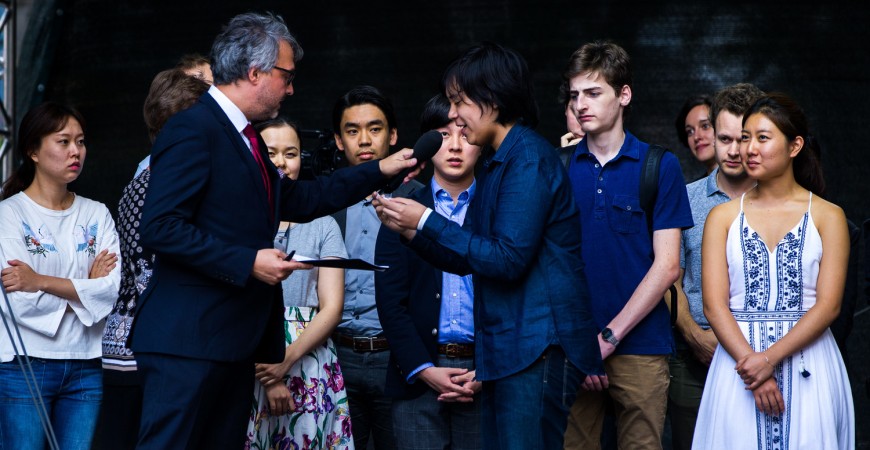
Photo: Gábor Ancsin / Liszt Academy



